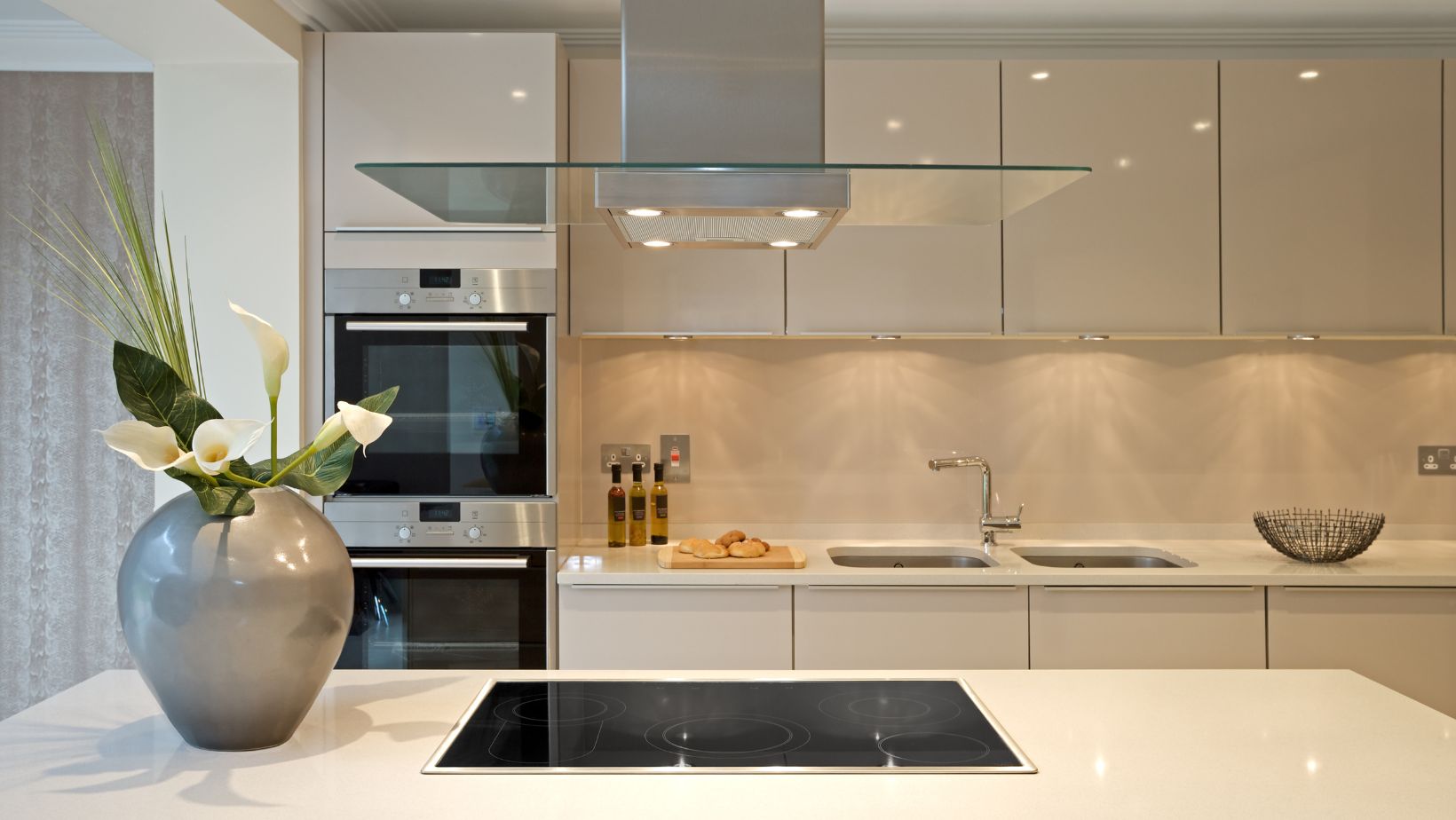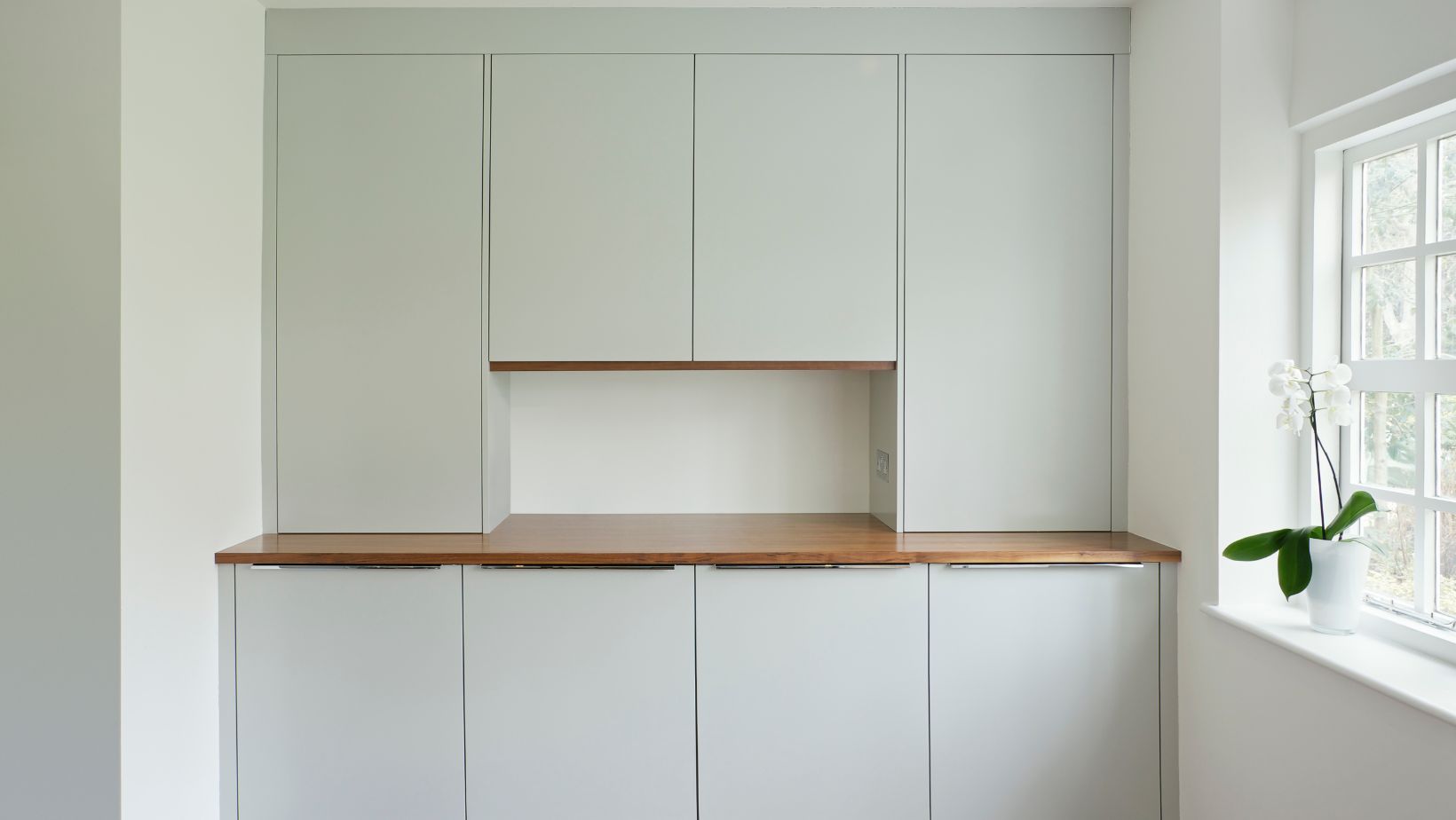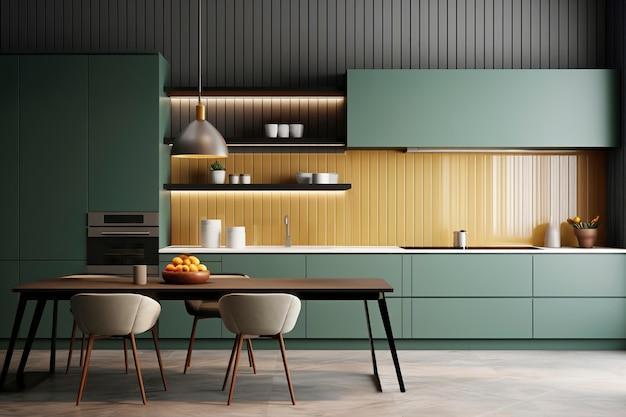Handleless kitchens have revolutionized the industry and rapidly become the go-to choice for homeowners looking to make the setting more efficient and convenient. With no need to grip knobs and bars, you have all the freedom to move around with messy hands and reduce the time that would otherwise be wasted removing the debris before opening doors.
Nevertheless, while in theory, they’re all openable without the direct grip of a hand, it’s important to remember that not all handleless kitchens are made the same. As you’ll see, the type of hardware chosen ultimately impacts the usability of your kitchen. Similarly, if you want to replace the kitchen doors for a quick and cheap makeover, the doors’ installment can differ a bit.
One of the hottest trends in kitchens is the replacement kitchen door. This allows you to enjoy a revamped kitchen while skipping the mess of installing a completely new set of units. Even more, you get a second chance to have that sleek and streamlined kitchen that will make cooking a pleasure. Are you ready to uncover the features you should consider before going with handles replacement doors or a completely new kitchen?
The battle of the heaviest in hardware
Your kitchen’s design, convenience, ease, safety, and hygiene are directly impacted by the type of hardware you choose for the doors. Will you grip, grab, pull, or push those doors open? Let’s dissect the two most popular hardware options for replacement kitchen doors – or any cabinet configuration, for that matter.
Push to open
Push-to-open doors are often chosen by homeowners, prioritizing the visual form. They’ve long ruled the kitchen furniture market, standing out through their ability to modernize, streamline, and declutter a room visually. With such cabinet hinges, you can enjoy a minimalist and sleek design setting, all the more if you seek the ethos of high-functioning kitchens. Moreover, you won’t stress about the nerve-racking noises that traditional drawer cabinets make. The hinges in question are silent thanks to the soft close mechanism designed to diminish noise in the kitchen – or any other room, for that matter.
When it comes to functionality, you won’t have to worry about pulling drawers with your hands dirty, or the whole is a godsend. Just press your wrist or elbow against the door, and you have access to basically any locker within reach and with push-to-open hinges. Noteworthy, you can install this feature on pretty much any unit, from wall cabinets to specialty units such as appliance garages. Whether you choose doors from the POV of a homeowner or designer, you’ll have the means to build cohesiveness throughout the space, regardless of the furniture’s configuration.
What to pay caution to
Generally, standard hinges are cheaper than push-to-open ones, both when it comes to upfront costs and long-term maintenance. The mechanism in the latter can collapse in time, especially when faced with aggressive maneuvering, frequent use, or poor installment. This wear and tear can further impact the door’s structure.

For an enhanced lifespan and durability, you can go with self-closing cabinet hinges optimized to pull the unit’s door shut after it gets opened and let free.
Finger pull
So, push-to-open kitchen doors are great if you seek solutions to streamline the room’s aesthetics. Now, if you want your choice to be driven by functionality instead of visual appearance, the finger-pull doors have a high chance of hitting the spot. These do what push-to-open promises, only that they’ll save you the stress of bumping the draws open. This option is excellent if you care for children and want to stop stressing over their doors opening. Not only will you prevent their access to perilous items, foods, and solutions, but you’ll also end worries related to hands caught on handles or incidental bumps that can easily open the push-to-open doors.
J-shaped units are popular in the finger-pull cabinet area. They come with a feature shaped like the letter in question—a cutout along the cabinet’s side edge or top. This option basically consists of a handle installed into the door or drawer itself, built into the unit for fingers to effortlessly grab and pull open, then release. If anything, remember that this feature is also known as the “lip pull handle.”
A downside must be considered
While finger pull handles are easily opened and help maintain a clutter-free space, it’s essential to maneuver them carefully when working with messy hands; or clean them right after cooking. Accumulations of debris can only promote bacteria buildup and become more challenging to clean as time passes. Still, let’s give Caesar what is Caesar’s. Knobs, ring pulls, bar handles, and other hardware handles do retain more debris compared to the finger pull type.
Now, choosing the door finishes
Once you’ve decided on the type of hardware that best suits you, it’s time to consider door materials and finishes.
Wrapped doors
Wrapped kitchen doors are generally the most affordable option. They are made of MDF or chipboard and have a vinyl-wrapped cover. Regarding finishes, you’ll typically have the gloss and matt options. Even if this type of product has undergone upgrades over time, it may still decay from delamination and become more so when exposed to water and heat.
Acrylic doors
One of the hottest choices as of late, acrylic doors are in high demand thanks to their versatile nature.

Reputable retailers can offer bespoke alternatives depending on your needs, so you can enjoy the acrylic door’s hard-wearing properties while keeping your kitchen’s structure and design unimpacted. One down can be the fact that acrylic doors tend to be on the pricier spectrum compared to the abovementioned alternative.
Lacquered doors
Lacquered or painted doors come in various thicknesses—preferably, you’ll go with the 22mm one for more quality. As with wrapped doors, you can opt for matt or glossy finishes. These are quite durable, and minor scratches or chips may be fixed with a touch-up kit at home.
Timber doors
Solid, veneered doors stand out through the variety of sizes and shapes presented. They’re usually MDF or chipboard with a veneered finish, but you can also find matt or gloss ones. These are great if you want something unique in looks.
Hopefully, you’ll weigh your options carefully and find the one that will meet your needs and preferences for years to come. Enjoy your quest!
